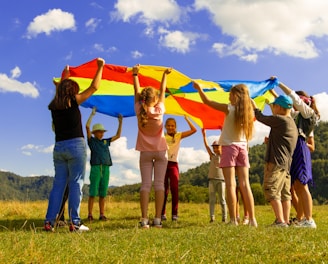Join us in saving the planet for future generations. Act now, every small step counts!
Be one of 100+ eco-conscious restaurants today!
California law
California's AB 1884 law prohibits full-service restaurants and bars from automatically providing plastic straws to customers unless requested.
Health Concern:
It is possible that microplastics are present in our blood due to consuming seafood and using plastic straws. Microplastics are tiny pieces of plastic that can enter our bodies through various ways, including:
Ingesting seafood: Many marine animals, such as fish, shellfish, and seabirds, have been found to contain microplastics. When we consume these animals, we may also be ingesting the microplastics they have accumulated.
Using plastic straws: Plastic straws can shed microplastics into our drinks, which we then consume.
While the long-term health effects of ingesting microplastics are still being studied, there is growing concern that they may pose a risk to our health. Some studies have suggested that microplastics can accumulate in our bodies and may interfere with our digestive system or other organs.


The Impact of Single-Use Straws: A Growing Concern
Single-use straws have become a significant environmental issue due to their widespread use and persistence in the environment. Here's a breakdown of the primary concerns:
2. Landfill Waste
Non-Biodegradable: Single-use straws are made from plastic, which is non-biodegradable. This means they can persist in landfills for hundreds of years, contributing to waste accumulation.
Environmental Pollution: Landfills can contaminate groundwater and soil through leachate, which is a liquid that is created when rainwater or other liquids come into contact with waste. This leachate can contain harmful chemicals and pollutants that can seep into the surrounding environment.


1. Marine Pollution
Ingestion by Wildlife: Marine animals often mistake plastic straws for food, leading to ingestion, blockages, and even death. Turtles, seabirds, and fish are particularly susceptible.
Microplastic Pollution: Over time, plastic straws break down into microplastics, which can enter the food chain and harm marine ecosystems


Plastic straw waste
The United States uses an estimated 500 million plastic straws every day, which is enough to circle the Earth twice. These straws end up in landfills, incinerators, and littering the environment, where they can persist for over 200 years.
Marine wildlife
Over 1 million seabirds and 100,000 marine animals die each year from ingesting plastic.
4. Resource Depletion
Fossil Fuels: Plastic straws are derived from fossil fuels, a finite resource. The continued use of single-use straws contributes to the depletion of these resources


3. Energy Consumption
Production and Transportation: The production and transportation of single-use straws require significant energy resources, contributing to greenhouse gas emissions


For a more in-depth look at the issue, check out these resources:
Ocean Conservancy: https://oceanconservancy.org/
Plastic Pollution Coalition: https://www.plasticpollutioncoalition.org/


The average person uses approximately 500 single-use straws per year.
This estimate is based on studies and surveys that have analyzed the consumption habits of individuals in various countries.
However, it's important to note that this number can vary greatly depending on individual lifestyle, location, and cultural practices. Some people may use fewer straws, while others may use significantly more.


A Poem for straw users
by: Hilary Sirio
Isn't your mouth elastic enough to drink from the glass? And why do you cover it, why do you hide its contents. You will be able to drink from it without using a lid; and why do you put a straw in it. When was something like this invented. Maybe for someone with a mouth too small. Or maybe for someone who doesn't have hands. To make it easier for liquid to enter their mouth? But you have arms!
Isn't your arm long enough to take the cup and put it in your mouth?!
Why use the straw? We are not contributing to the generation of tons of garbage. We are not thinking of a world for our children. The natives are doing enough on islands where no human with technology can step there. They don't use resources that are becoming extinct. They don't contribute to global corruption. What are you doing, your intellectual human Isn't what you learn enough? Or are you not learning it to practice?
Open your hands and let go of the opportunity for them. For those little ones who will later blame you. You did not use your human intelligence, you used up every resource. Only ruins and scarcity you left behind as you walked, It is not necessary to cover the glass, It is not necessary to use the straw. Save a healthy planet for your generations.
They should also enjoy it And why throw and throw away. Why not use it until it is finished; Clothes, shoes, household items. You need to look at what the real need is. Do not pay attention to vanity, which only wants to use new things. It takes great care of its physical appearance, only the shell. Vanity and selfishness on the move. They squander like intelligence, rather than aberrant they are. You, on the other hand, human, walk by example. Someone behind you must be formed. Thus you will have completed the cycle, the cycle of life that another creature will have to begin.


Join the Movement to Save Our Planet
At Say No to Straws, we advocate for a sustainable future. Together, we can reduce waste and protect our oceans for the children of tomorrow. Every small action counts.


A vital step for our future!
"
"
Contact Us Today
Reach out to us to join the movement against waste and straws. Together, we can protect our planet for future generations.
Contributors Needed....
Support
info@saynotostraws.com
Act
Join us in saving the planet for tomorrow.
Love TRUTHFULLY
contactus@saynotostraws.com
© 2024. All rights reserved. By Hilary Sirio
